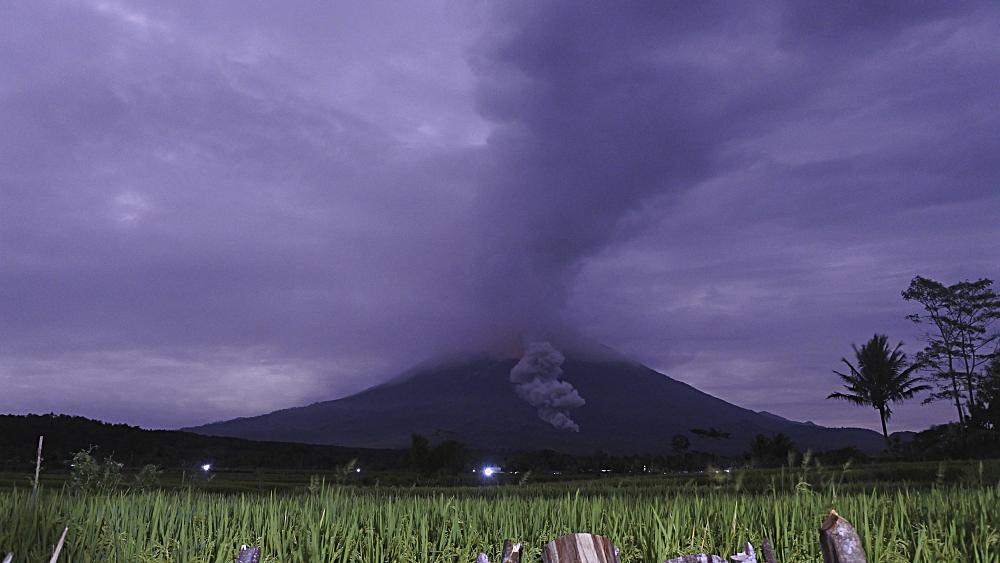Archaeologists continue to excavate in search of remains left behind after the 79 AD Mount Vesuvius volcanic eruption which decimated the ancient cities of Pompeii and Herculaneum in Italy. Now, an Italian archaeologist has compared the devastating eruption to the 1945 dropping of the atomic bomb, Little Boy, on Hiroshima, due to the immense heat produced. Believed to have reached temperatures between 400 ℃ and 500 ℃, the Vesuvius eruption caused a pyroclastic surge that boiled the blood and brains of its victims almost instantly, reports The Guardian .

Volcanic eruption of Mount Vesuvius by Joseph Wright of Derby. ( Public domain )
On Discovering the Last Fugitive of the Vesuvius Eruption
“The remains of victims here have been found in a similar condition to those of Hiroshima,” highlighted Domenico Camardo, an archaeologist at the Herculaneum conservation project in a presentation to the press on December 1st. “You really get a sense of the horror and tragedy.” These comments were inspired by the remains of a single, partially mutilated male victim who was caught trying to flee the volcanic eruption. Referred to as the last fugitive, the male victim was aged between 40 and 45 years old.
Back in October 2021, Ancient Origins published an extensive report on the find of the last fugitive, who was inches away from the sea when he came to his untimely demise. The head was found pointing in the direction of the sea, while the body was surrounded by carbonized wood, an indication that a roof beam had probably crushed his skull.
In a statement to ANSA, Francesco Sirano, Director of the Ercolano Archaeological Park, explained:
“The last moments here were instantaneous, but terrible. It was one o’clock at night, when the pyroclastic surge produced by the volcano reached the town for the first time with a temperature of 300-400 degrees Celsius [572-752 degrees Fahrenheit], or even, according to some studies, 500-700 degrees [932-1292 degrees Fahrenheit].”

The horror and the tragedy of the Mount Vesuvius eruption personified in the human remains found at Herculaneum. ( Parco Archeologico di Ercolano )
Escaping the Mount Vesuvius Pyroclastic Surge
Defined in Britannica as “a fluidized mixture of hot rock fragments, hot gases, and entrapped air that moves at high speed” in the case of some volcanic eruptions, the pyroclastic surge was evidenced in a “white-hot cloud that raced towards the sea at a speed of 100 kilometers [62 miles] per hour, which was so dense that it had no oxygen in it,” continued Sirano.
“In the space of a few minutes [this inferno] engulfed and swallowed up the upper part of the town, uprooting the roofs and mowing down men and animals with a heat such as to make their bodies evaporate,” described Sirano in a scientific, but horribly painful, account of the Mount Vesuvius eruption.
The last fugitive was clutching a small leather bag containing a wooden box, from which an iron or bronze ring was found protruding. A conservator working on the project, Nunzia Laino, remarked that he was possibly escaping with his most precious belongings. Nevertheless, the discovery is a little complex to process, as there are fabric scraps which will have to be extracted before further studies can be carried out. The victim’s bones were of a reddish color, indicating that the blood had left stains, added Sirano.

The blackened skeleton of a 40 to 45-year-old man was found with a cloth shoulder bag containing a wooden box and other materials. ( Parco Archeologico di Ercolano )
The Extreme Heat and Subsequent Preservation at Herculaneum
Pompeii and Herculaneum met the same fate, but with different results, as Camardo explains. “ Pompeii was destroyed by a rain of ash and lapillus, which buried it by three or four meters (9.8 to 13.1 ft). Instead, Herculaneum was first destroyed by the pyroclastic cloud of a temperature of over 400 degrees. It burned trees, inhabitants and other forms of life. Six waves of volcanic mud arrived like a flood and froze it under 20 meters [65.6 ft] of material.”
The mud then hardened, allowing for the preservation and conservation of organic relics, including food. This was not the case in Pompeii, where few remains have been found. Excavations in the 1980s and 1990s unearthed the remains of 330 well-preserved skeletons in boat sheds, who were probably hiding out from the volcanic eruption , hoping to be rescued by the sea.
The skeleton and accompanying finds are now slated to be moved to a laboratory, due to their fragile condition. Excavators will continue their work and analysis, which will probably reveal more information from these beach excavations, reports The Art Newspaper . This is the first skeleton to be discovered in 25 years, since the 330 found in the late 1980s and early 1990s.
“Today it’s possible to do some kinds of analysis that 20, 30 years ago it wasn’t possible to do,” concludes Pier Paolo Petrone, a forensic anthropologist at the University Federico II of Naples, who worked on the site. “For instance, we are studying the DNA of these people. We will tell the story of these people. Herculaneum is an open book.”
Top image: Excavated remains of the last fugitive at Herculaneum archaeological park. Source: Parco Archeologico di Ercolano
By Sahir Pandey
Related posts:
Views: 0
 RSS Feed
RSS Feed

















 December 4th, 2021
December 4th, 2021  Awake Goy
Awake Goy 



 Posted in
Posted in  Tags:
Tags: 
















